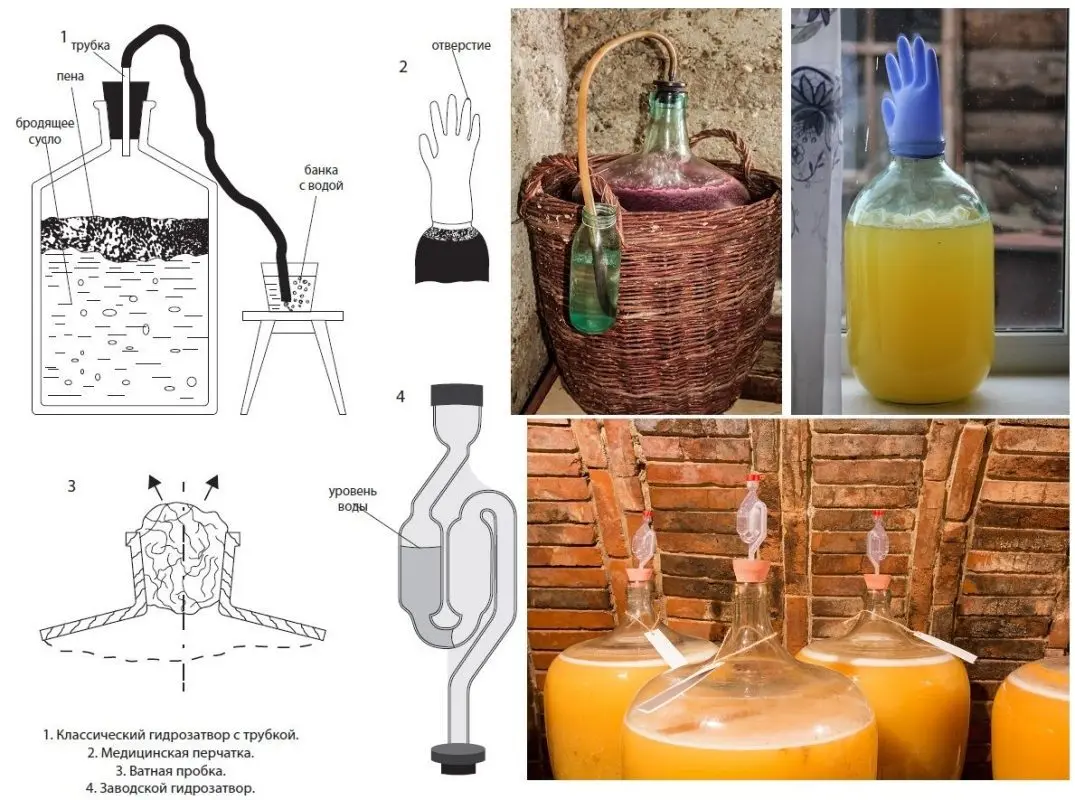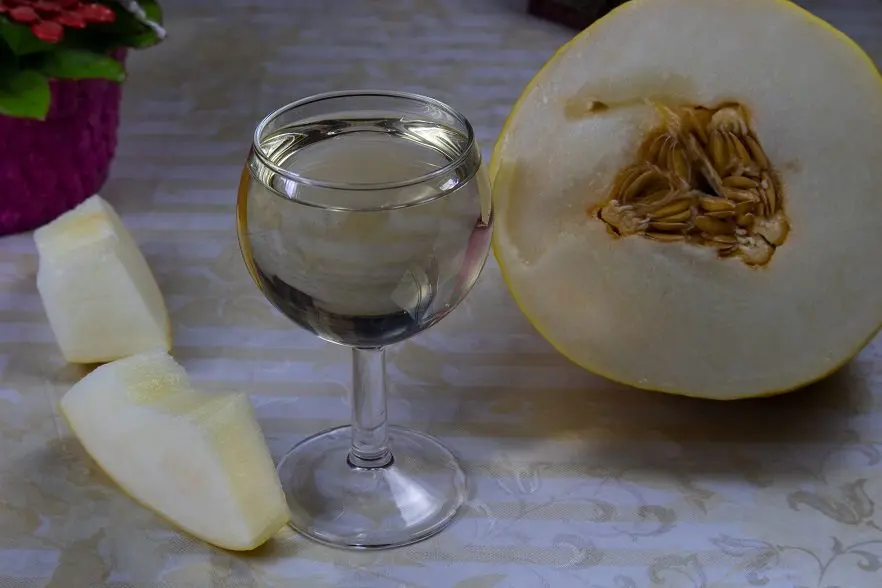Due to its high sugar content and acceptable acidity, melon is a good raw material for home winemaking. It produces drinks with a unique aftertaste, but a very weak aroma. Therefore, I advise you to make sweet or fortified melon wines. We will consider the recipe, proportions and cooking technology further.
Before starting, wash all used containers with boiling water to prevent contamination of the juice by third-party microorganisms, such as mold.
Ingredients:
- ripe melon – 8 kg;
- sugar – 1,5 kg;
- water – 0,5-1 liter (optional);
- citric acid – 4 grams per 1 liter of juice;
- raisins – 150 grams.
Citric acid can be replaced with fresh lemon juice, one medium-sized fruit contains 5-7 grams of citric acid.
Melon wine recipe
1. 2-3 days before the start of cooking, make a starter for wine. If there is no starter, at the 4th stage, you can simply throw unwashed raisins into the container, but then the fermentation will last longer.
2. Cut the melon fruits into pieces. Remove the pits, peel and inedible white part, leaving only the pulp for the wine.
3. Squeeze out the juice from the pulp in any way possible. You can squeeze through several layers of gauze or use a juicer. If the juice turned out to be very thick, dilute with water (no more than 1 liter).
4. Pour the juice into the fermentation tank, leave 25-30% of the volume free. Add starter (raisins) and citric acid, mix. Install a water seal or medical glove with a hole in the finger.

5. Move the container with the future wine to a dark place with a temperature of 18-26°C. After 4 days, add 500 grams of sugar. To do this, pour 0,5 liters of fermented wort into a separate container, dissolve sugar in it, then pour the syrup back in and close it with a water seal. Repeat the procedure 2 more times every 3-4 days.
6. After a few weeks, fermentation will end (signs: the water seal does not blow bubbles for 2-3 days, the glove deflates, sediment appears at the bottom, and the wine itself becomes light). This means that it’s time to pour the young melon wine into another container through a thin tube. It is important not to touch the sediment at the bottom.
If fermentation does not stop after 50 days from the start of preparation, the wine should be drained from the sediment and put under a water seal to ferment, otherwise bitterness may appear.
7. Taste wine. Add sugar to taste if necessary. You can also fix the drink with alcohol or vodka – 2-15% of the volume.
8. Fill the storage container to the top (so that there is no contact with air), tightly close the lid and transfer to a room with a temperature of 5-12 ° C, leave for 45-70 days to ripen. If sugar was added at the previous stage, keep it under a water seal for the first 7-10 days.
Once every 20-25 days, filter from the sediment by transfusion. The drink is ready when the sediment no longer appears.
9. If desired, pour the wine from the melon into bottles and close tightly with corks. You can store the drink in the container in which it matured.
Shelf life – up to 2 years. Fortress – 9-12%. The color depends on the variety of melons used.










